A block of mass m1 lies on the top of fixed wedge as shown in fig. and another block of mass m2 lies on top of wedge which is free to move as shown in fig. At time t=0 both the blocks are released from rest from a vertical height h above the respective horizontal surface on which the wedge is placed as shown. There is no friction between block and wedge in both the figures. Let T1 and T2 be the time taken by the blocks respectively to just reach the horizontal surface. then
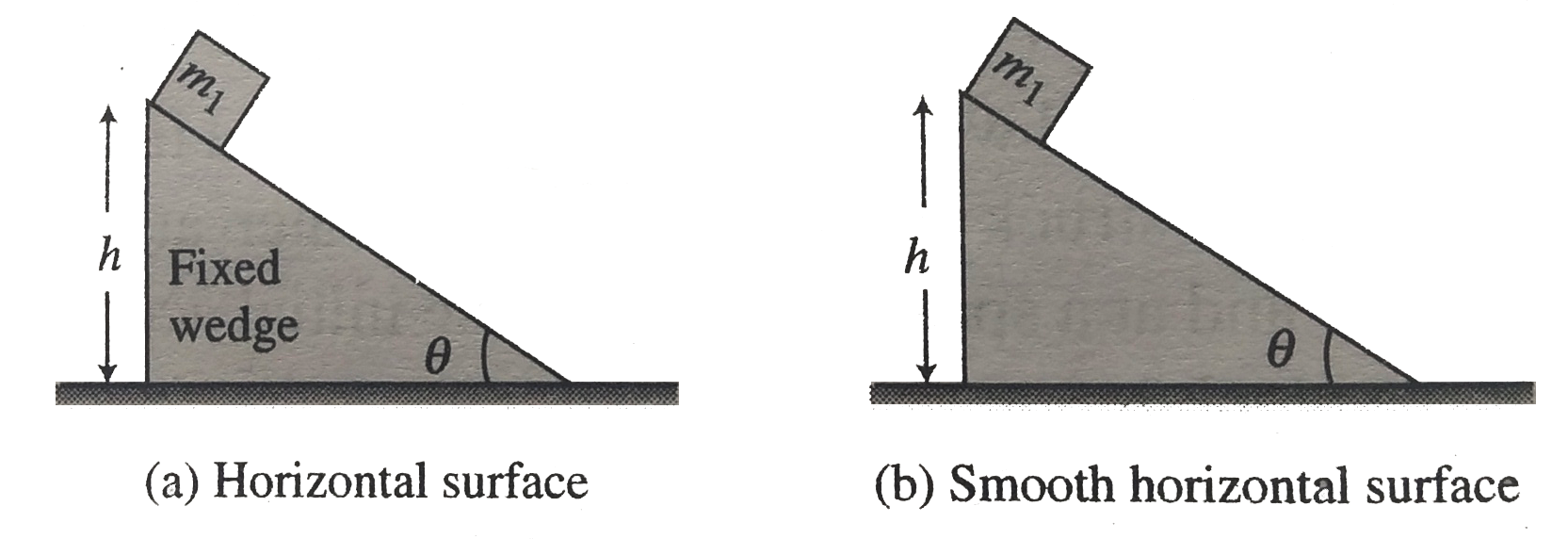
T1>T2
T1<T2
T1=T2
Data insufficient
The correct Answer is:A
In first case, acceleration of m1 willbe a1=gsinθ down the inclined plane. In second case, acceleration of m2 w.r.t incline is
a2=m2gsinθ+m2acosθm2
⇒a2=gsinθ+acosθ
since a2>a1.soT2<T1.
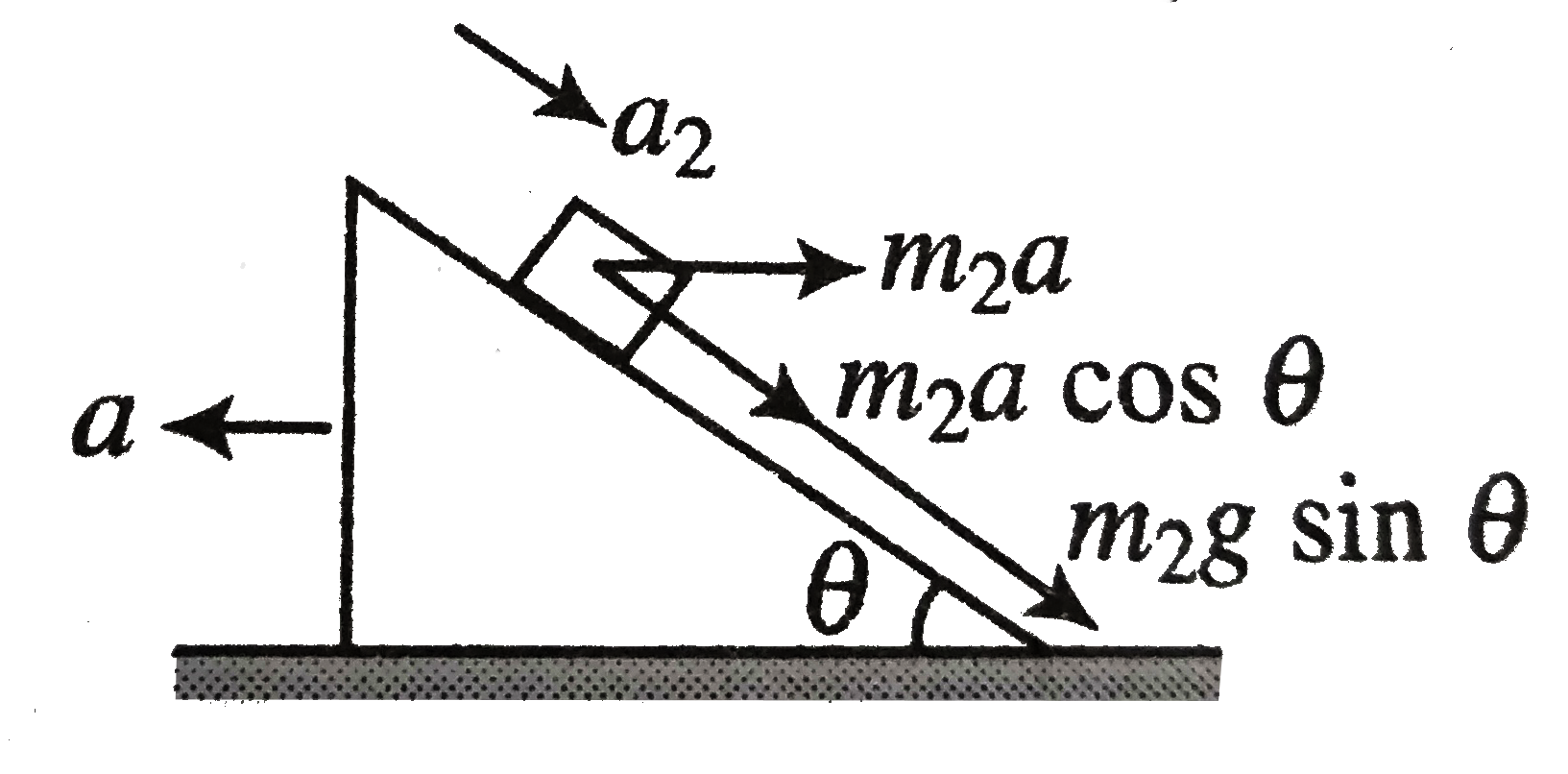
Similar Questions
A block of mass m1 lies on top of fixed wedge as shown in figure 1 and another block of mass m2 lies on top of wedge which is free to move as shown in figure 2. At time t=0, both the blocks are released from rest from a vertical height h above the respective horizontal surface on which the wedge is palced as shown. There is no friction betwen block and wedge in both the figures. Let T1 and T2 be the time taken by block in figure 1 and block in figure 2 respectively to just reach the horizontal surface then:
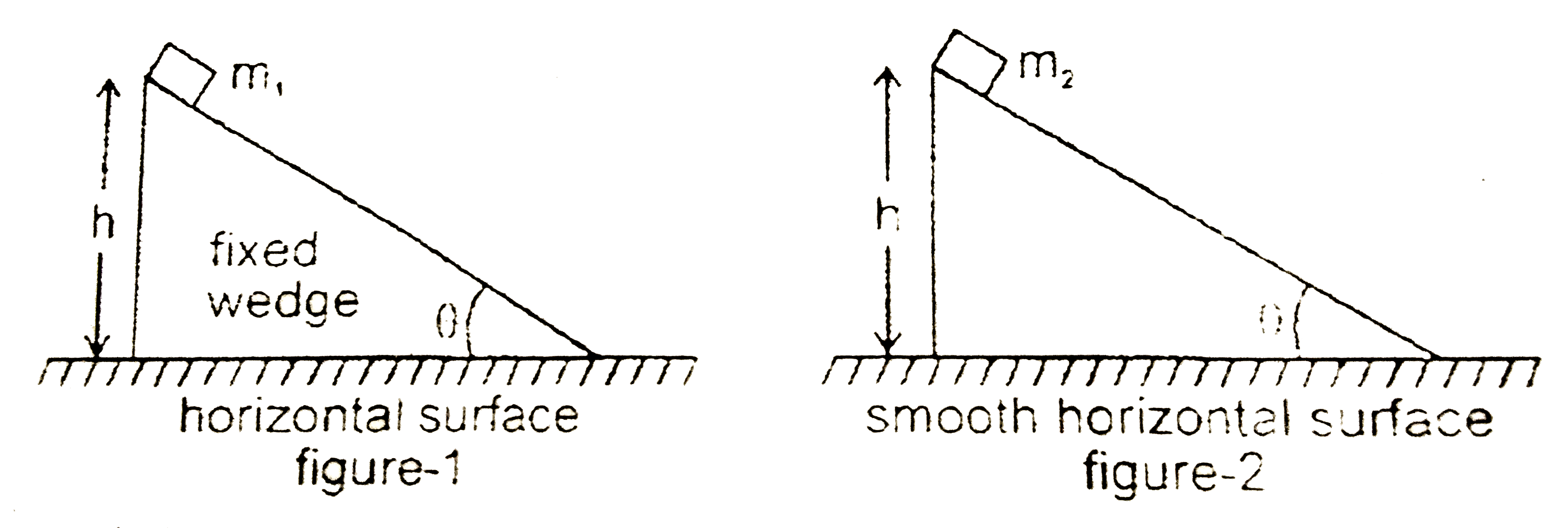
View SolutionA wedge with mass M rests on a frictionless horizontal surface A block with mass m is placed on the wedge. There is no friction between the block and the wedge. A horizontal force f is applied to the wedge. What magnitude F must have if the block is to remain at constant height above the table top?

View SolutionIn the arrangement shown in the fig. the block of mass m lies on the wedge. Wedge is moving with acceleration a = 5 m/sec Find the wedge acceleration of the block with respect to wedge.
View SolutionIn the arrangement shown in the fig. the block of mass m lies on the wedge. Wedge is moving with acceleration a = 5 m/sec . Find the wedge acceleration of the block with respect to wedge.
View SolutionA block of mass m is released from the top of a wedge of mass M as shown in figure. Find the displacement of wedges on the horizontal ground when the block reaches the bottom of the wedges. Neglect friction everywhere.
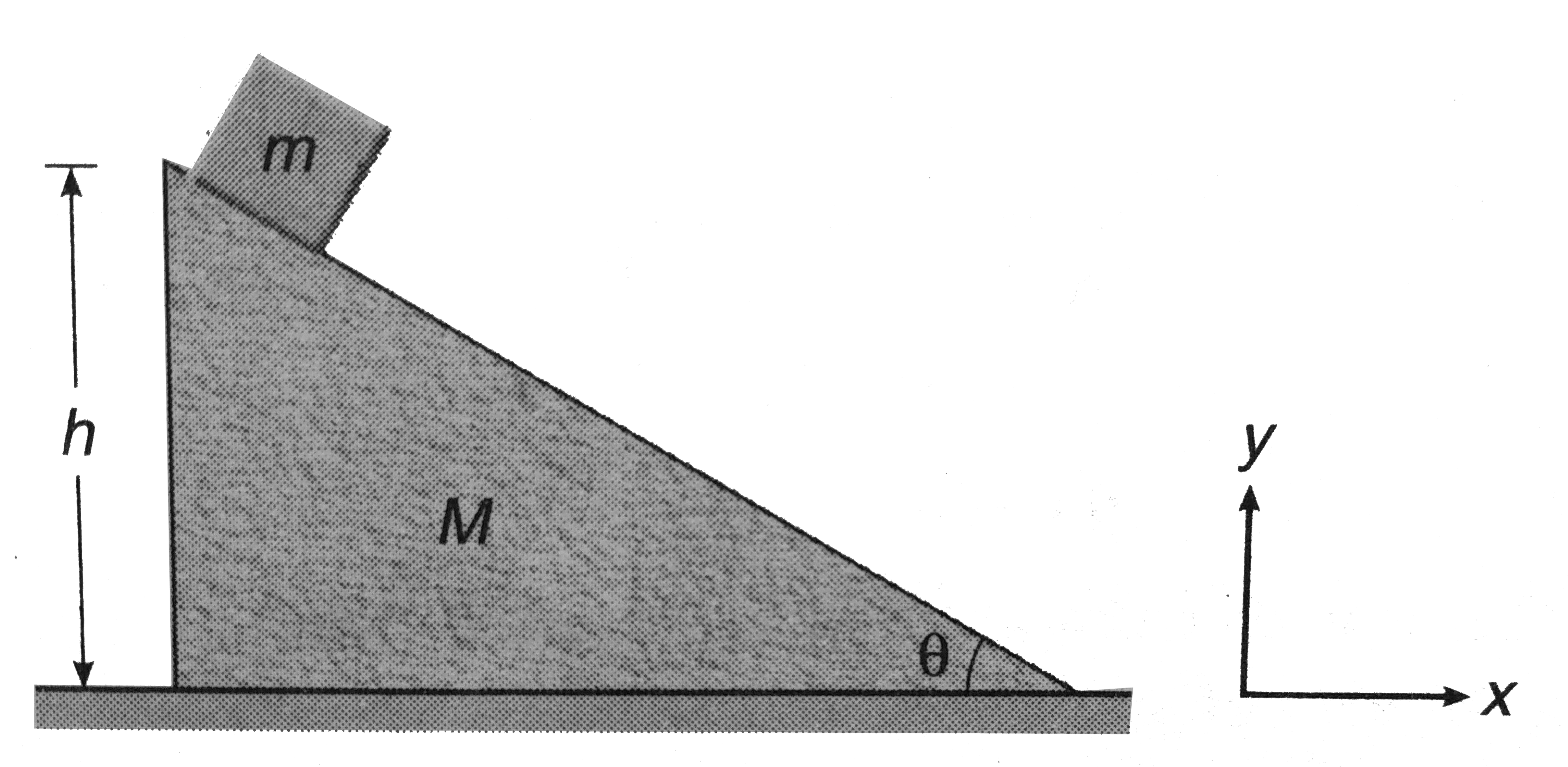
View SolutionA small block of mass m is placed at rest on the top of a smooth wedge of mass M, which in turn is placed at rest on a smooth horizontal surface as shown in figure. If h be the height of wedge and θ is the inclination, then the distance moved by the wedge as the block reaches the foot of the wedge is
View SolutionA block of mass m is placed on the inclined sufrace of a wedge as shown in fig. Calculate the acceleration of the wedge and the block when the block is released. Assume all surfaces are frictionless.
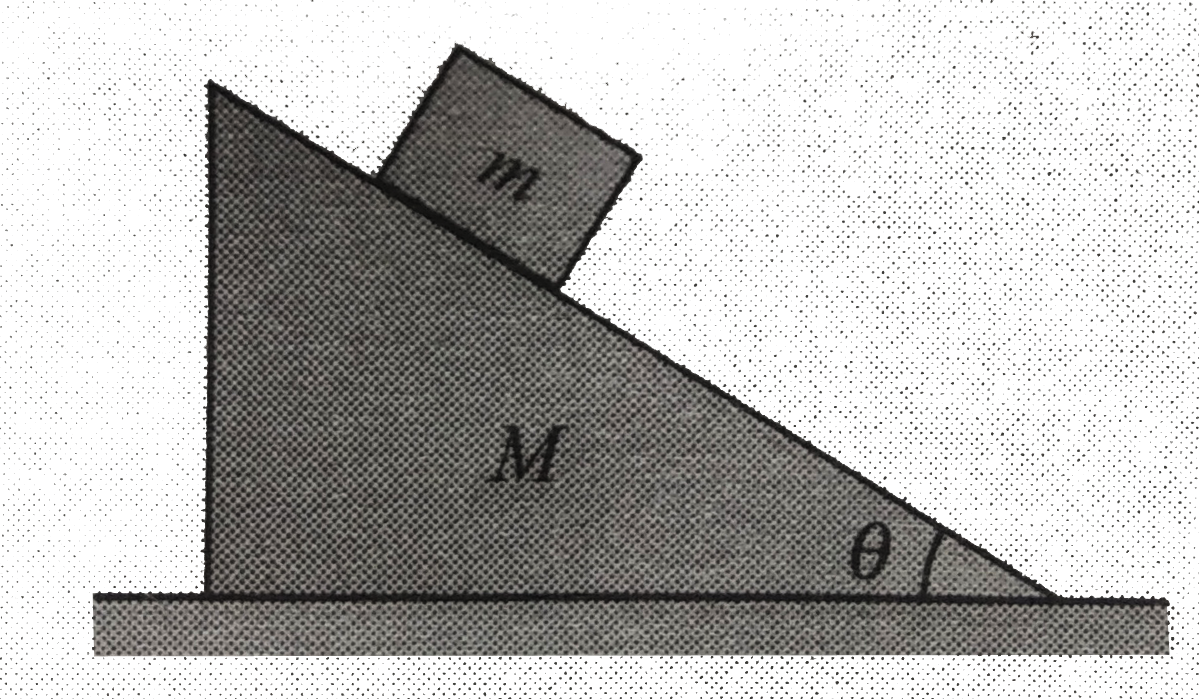
View SolutionA block of mass m_(1) lies on the top of fixed wedge as shown in fig. and another block of mass m_(2) lies on top of wedge which is free to move as shown in fig. At time t=0 both the blocks are released from rest from a vertical height h above the respective horizontal surface on which the wedge is placed as shown. There is no friction between block and wedge in both the figures. Let T_(1) and T_(2) be the time taken by the blocks respectively to just reach the horizontal surface. then
View Solution

